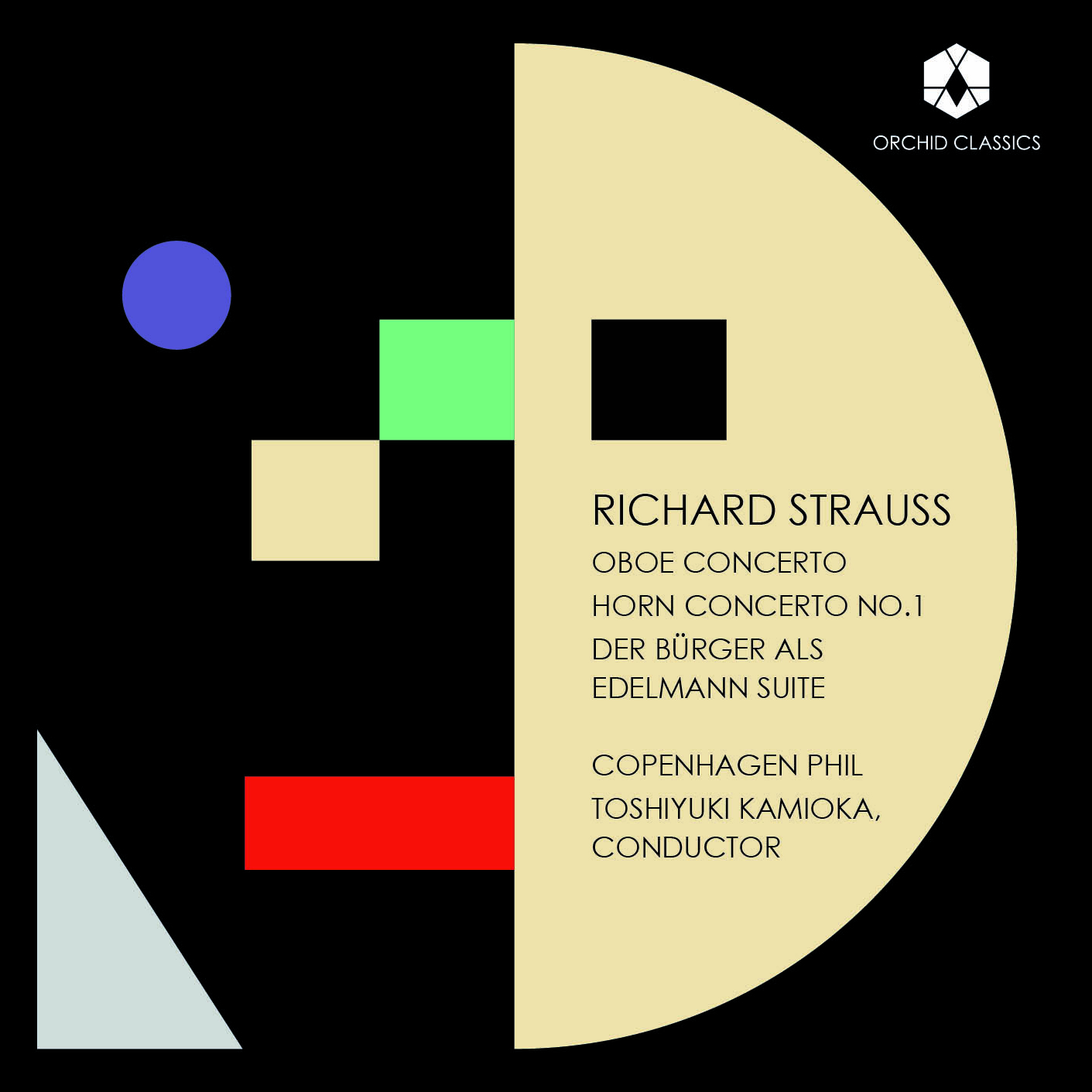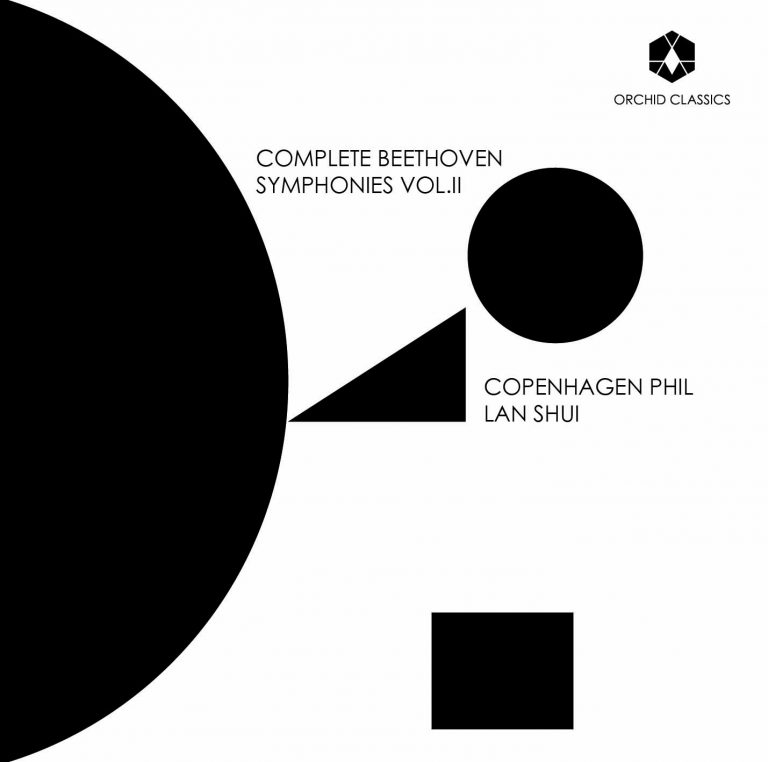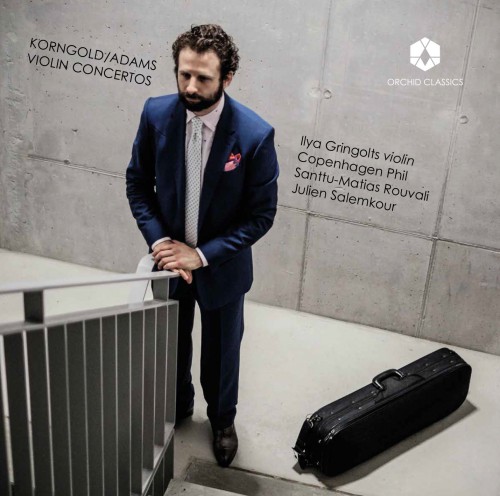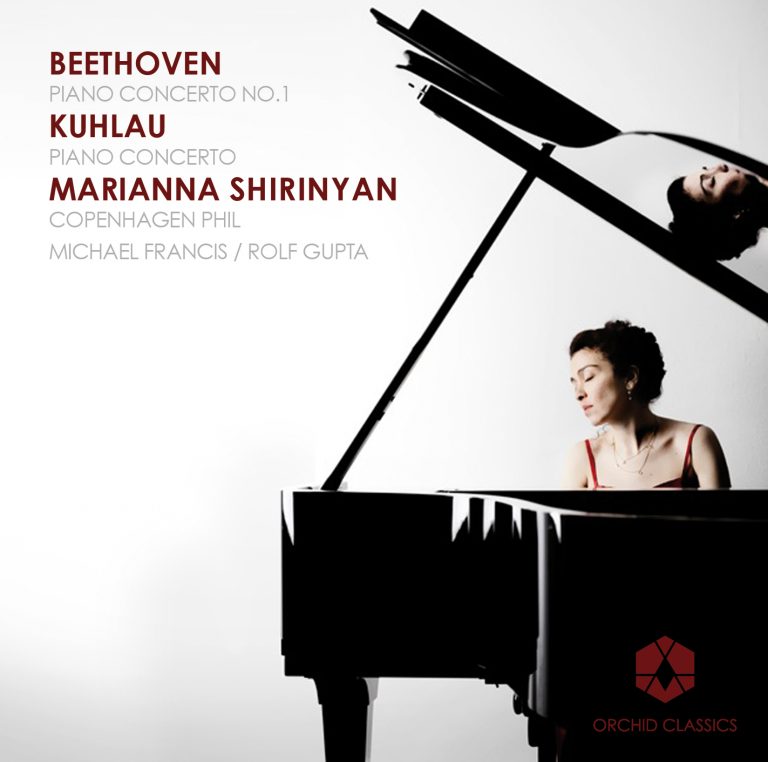Artist Led, Creatively Driven

Richard Strauss
Copenhagen Phil
Andreas Fosdal, oboe
Jakob Keiding, french horn
Toshiyuki Kamioka, conductor
Release Date: 17th Nov
ORC100261
Richard Strauss (1864-1949)
Oboe Concerto, TrV 292
1. I Allegro moderato (attacca)
2. II Andante (attacca)
3. III Vivace – Allegro
Horn Concerto No.1, Op.11
4. I Allegro
5. II Andant
6. III Allegro
Der Bürger als Edelmann Suite
7. Ouverture zum 1. Aufzug (Jourdain-der Bürger)
8. Menuett
9. Der Fechtmeister
10. Auftritt und Tanz der Schneider
11. Das Menuett des Lully
12. Courante
13. Auftritt des Cleonte (nach Lully)
14. Vorspiel zum 2. Aufzug (Intermezzo)
(Dorantes und Dorimene Graf und Marquise)
15. Das Diner (Tafelmusik und Tanz des Küchenjungen)
Copenhagen Phil
Andreas Fosdal, oboe
Jakob Keiding, french horn
Toshiyuki Kamioka, conductor
At the end of the Second World War, Richard Strauss and his wife Pauline de Ahna sought refuge in Switzerland, escaping the hostile environment of their native Germany. The Allied forces started to secure the Bavarian town of Garmisch, where Strauss lived, in April 1945. Musically sympathetic military officers declared the composer’s villa to be off limits, sparing him any undue conflict, but they were unable to protect him from the food and fuel shortages plaguing the region, prompting the composer’s move to Baden, near Zürich.
One of the soldiers who met Strauss at this time was oboist John de Lancie, who had been principal oboist of the Pittsburgh Orchestra from 1940, and who had enlisted in the US Army in 1942, performing in the US Army Band. De Lancie knew Strauss’s oboe writing from his orchestral scores and asked the composer if he had ever considered writing an oboe concerto. ‘No,’ came the flat reply. Despite this inauspicious start, Strauss set about composing the Concerto, finishing the essential material by 14 September 1945, with the full orchestration completed by 25 October. Strauss later revised the final movement ahead of the work’s publication in 1948.
Strauss’s Oboe Concerto was premiered in Zürich on 26 February 1946 by Marcel Saillet and the Tonhalle Orchestra. The British premiere followed at the Proms on 17 September 1946, and the first recording of the work was made in 1948 by Léon Goossens and the Philharmonia Orchestra. Meanwhile, Strauss ensured that the rights to the work’s US premiere went to John de Lancie. The oboist had joined the Philadelphia Orchestra in 1946 but would not become section principal until 1954; protocol required that he could not give a premiere in place of his section leader. De Lancie chose to give the rights to a young oboist, Mitch Miller, who played in the CBS Symphony in New York. De Lancie eventually performed the work with the Philadelphia Orchestra in 1964, conducted by Eugene Ormandy.
Strauss was humorously dismissive of the Concerto: ‘Workshop exercises, written to prevent the right wrist, freed from the drudgery of wielding the baton, from going to sleep prematurely.’ Yet the score is enchanting, its three movements flowing seamlessly without a break. The pastoral opening movement, with its ornate oboe lines and animated contrasting theme, leads into to a radiant slow movement. A cadenza ushers in the finale, a rondo that features another virtuosic cadenza and a waltzing final section.
Strauss was inspired to write his First Horn Concerto by his father, the accomplished horn player Franz Strauss. For the rest of his life Strauss would give the instrument prominent roles in his scores, although his Second Horn Concerto appeared much later, in 1942. Franz Strauss was principal horn player at Munich’s Court Opera and held staunch musical opinions; he and his brother-in-law Georg Pschorr discouraged Richard’s interest in Wagner. But the music won, as Richard recalled: ‘At the age of 17 I feverishly devoured the pages of the score of Tristan until my enthusiasm reached a pitch of intoxication… After that (in spite of my old uncle’s warnings about the “swindler of Bayreuth”) I became a complete Wagnerian.’
Franz eventually capitulated, and when he was invited to play in the Bayreuth orchestra for the first performances of Parsifal, Richard was taken as a treat. It was at around this time that Richard Strauss began writing his Horn Concerto No. 1. The version for horn and piano, premiered in Munich in 1883, is dedicated to his father, but the 1884 publication was dedicated to Oscar Franz of the Dresden Orchestra. This version was first performed in 1885 by Gustav Leinhos in Meiningen, with Hans von Bülow conducting.
Strauss originally called the work the ‘Waldhornkonzert’, indicating that it should be played on the natural valveless horn (Waldhorn). This may have been an in-joke, or even a practical joke for Franz, as it is almost impossible to play this work on a natural horn. Johanna, Richard’s sister, wrote to British horn player Dennis Brain that she ‘vividly remembered’ her father ‘struggling with the solo part, which he found very tiring, even using the high B-flat crook. In particular, he seems to have found the high B-flats too daring and dangerous for performance in the concert hall’.
With the First Horn Concerto, Strauss began to break out of his early educational shackles to find his own musical voice, although the influence of Schumann is clear. The work is conceived as one continuous piece, and exhibits many of the hallmarks of Strauss’s style, including an evident relish for the horn’s uninhibited, bucolic character as it cuts through the orchestral colours with a sparkling sense of humour.
The Concerto begins with an assured, ebullient hunting-horn statement, answered by the orchestra. There is a lyrical secondary theme, the horn taking centre stage throughout, with the orchestra adding little more than brief moments of emphasis. In the slow movement, the horn unfolds an expansive and contemplative melody over a recurring four-note idea. The final rondo features more bravura horn writing, and a light, scherzo-like final section, in which the soloist is given music of scintillating, joyous virtuosity.
Stravinsky and Prokofiev are widely credited for being at the forefront of neoclassicism – the modern movement that embraced Baroque and Classical techniques and idioms. Yet it is possible to argue that Richard Strauss – a name not usually associated with the style – got there first. In 1911, Strauss’s regular collaborator and librettist Hugo von Hofmannsthal came up with the idea of a form of entertainment that both incorporated influences from the past, and represented something quite new. His suggestion was to stage a play with incidental music based on the 17th-century Molière-Lully collaboration Le bourgeois gentilhomme (Der Bürger als Edelmann in German) for which Hofmannsthal reduced the original play from five acts to two – followed immediately by the performance of an opera, Ariadne auf Naxos.
Rehearsals were riddled with tensions, but at last the complete work was staged on 25 October 1912 in Stuttgart – and was not well received. Strauss wrote: ‘The audience was looking forward to the Strauss opera so much that it did not show sufficient interest in the splendid Molière … and after the Molière the amiable King Karl of Württemberg, with the best of intentions, held a reception lasting three quarters of an hour, which meant that Ariadne, which lasts an hour and a half, began two and a half hours after the beginning of the play, so that the audience was somewhat tired and ill-tempered.’
Further productions, including an English one to a translation by Somerset Maugham, followed, but audiences stayed away, exacerbating the strain between Strauss and Hofmannsthal, who was dismayed at the work’s apparent failure. Yet both must be given credit for conceiving something unprecedented in the modern age, and which was almost certainly more influential than other composers let on; Stravinsky may have declared that ‘Ariadne makes me want to scream’, but Strauss’s use of minuets, gavottes and courantes during the preceding play must surely have piqued Stravinsky’s interest in Pergolesi for Pulcinella, which was composed five years later (as was Prokofiev’s ‘Classical’ Symphony). Strauss would also go on to write two works inspired by Couperin, in 1923 and 1942 respectively, cementing his role as an improbable but invaluable contributor to the neoclassical repertoire.
Ariadne auf Naxos recovered from those early challenges – which were in part attributable the music’s innovative qualities – but the play’s incidental music is less frequently performed. Strauss finished the orchestral suite on Christmas Day 1917 and conducted the work in Berlin on 9 April of the following year. The suite opens with a sprightly ‘Ouvertüre’ in which Strauss’s fingerprints are just discernible in the shape of the motifs; the movement’s bright elegance is contrasted with a surreal dramatic interlude, and with a lyrical passage in which the oboe is to the fore. Ideas reminiscent of the recently written Der Rosenkavalier (1910), to another Hofmannsthal libretto, are apparent here and in the graceful ‘Minuett’; the leap from that opera’s fin-de-siècle, rococo aesthetic to the neoclassical exploration of earlier music is, one realises, not so vast.
The play satirises both the aristocracy and middle-class social climbing; ‘The Fencing Master’ is one of the characters employed to help in the raising of status of the main protagonist, Jourdain, as are the tailors portrayed in the wittily fastidious ‘Entry and Dance of the Tailors’. Movements five to seven all draw upon Lully’s music; during the tender ‘Entry of Cléonte’ we meet the character who will bring about Jourdain’s humiliation, but who is also in love with Jourdain’s daughter, Lucile.
After an ‘Intermezzo’ in which refinement is communicated with the familiar sense of a twinkle in Strauss’s eye, comes the ‘Dinner’ at which Jourdain tries to impress with dishes of salmon, mutton, and a platter of larks and thrushes (depicted via musical birdsong), culminating in an omelette from which emerges a servant who dances for the assembled company. In the play, matters come to a head when Cléonte fools Jourdain into believing that he is an Ottoman prince, in which guise he anoints him Paladin and invites him to officiate at a wedding. Unwittingly, Jourdain oversees the marriage of Cléonte and his daughter – united at last.
© Joanna Wyld, 2023
Copenhagen Phil
Playing around 120 concerts, opera and ballet performances plus approximately 180 outreach activities per year, the Copenhagen Phil is one of the busiest and most versatile orchestras in Denmark.
Copenhagen Phil can trace its roots back to 1843 when the Danish composer Hans Christian Lumbye became the first music director of the now historic amusement park Tivoli Gardens in Copenhagen. Lumbye requested that an orchestra was created to play in the concert hall of the Tivoli Gardens. This orchestra has since grown from 22 musicians to the full-sized, full-time symphony orchestra, Copenhagen Phil.
Apart from offering symphonic concerts throughout Eastern Denmark, the orchestra collaborates with the Danish National Opera, the Royal Danish Theatre and the CPH Opera Festival on ballet and opera performances each year. Educational outreach activities in public schools, music schools and secondary schools are also an integral and important part of the orchestra’s activities throughout the year, bringing the world of classical music to children and youths. Through the years, Copenhagen Phil has developed into one of the most innovative classical orchestras in Denmark, always seeking new ways in which to create meetings between members of the public and the world of classical music; from music lovers to those who have not yet met the world of classical music.
In 2011 the orchestra first introduced their 60 minutes of-concert series, designed to attract new audiences by collaborating with popular artists from other musical genres like pop, folk and electronica. A few years later, the orchestra introduced the Open Orchestra, which allows audiences to walk around between the musicians while they are playing, providing young and old with a unique and intimate encounter with the music.
The orchestra’s most recent innovative take on the classical concert experience, Crucial Moments, presents classical pieces and symphonies, which have touched on world history, music history or the composer’s personal history in some crucial way. A dramatic manuscript is created and presented by an actor alongside the music, making it possible for Copenhagen Phil to coin the new term “concert-performance”. On presenting the first Crucial Moment – A Miracle in a war zone based on Shostakovich’s Leningrad Symphony and its role during the siege of Leningrad 1941-1944 to a crowd of secondary school students, the students reacted with comments like “Amazing!” and “So moving, I could hardly breathe!”
In 2011 and 2012, Copenhagen Phil created what has since become two of the most successful flash mob videos on YouTube: A performance of Ravel’s Bolero at Copenhagen Central Station and Grieg’s Morning Mood in the Copenhagen Metro. These videos have generated millions of views on YouTube and made headlines all over the world – from CNN to Huffington Post and NHK Japan. And more importantly – they have moved people around the world.
During the 2016/17 season the German/Japanese conductor, Toshiyuki Kamioka, joined the orchestra as chief conductor, a position he still holds. From the season 2022/23 Copenhagen Phil is incredibly proud to announce that one of the world’s greatest living conductors – Maestro Christoph Eschenbach – joins the position as Honorary Guest Conductor for the next two seasons.
Toshiyuki Kamioka
Conductor
Toshiyuki Kamioka is currently Chief Conductor of Copenhagen Phil, a position he began in the 2016/2017 season and ends in the 2022/23 season.
Toshiyuki Kamioka was born in Tokyo in 1960, where he studied conducting, composition, piano and violin at the National University of Fine Arts and Music. In 1982, he was awarded the coveted ‘Ataka Prize’ and, two years later, received a Rotary International Fellowship to attend the Hochschule für Musik und Theater in Hamburg, where he studied conducting under Klauspeter Seibel.
By 1987, he had received a position as Lecturer in Chamber Music and Accompaniment at the Hochschule für Musik und Theater in Hamburg and, during the 2000/2001 season, he served as Professor for the Opera Studio at the Hochschule für Musik Frankfurt am Main. Since Autumn 2004, he has been Professor of Conducting at the Hochschule für Musik Saar in Saarbrücken, where he works towards the development of the next generation of conductors – a job that keeps him sharp and professional.
Toshiyuki Kamioka gained his first opera conducting experience as solo repetiteur and Kapellmeister at the Städtische Bühnen in Kiel (currently known as Theater Kiel). From 1992 to 1996, he was the lead Kapellmeister at the Aalto Theater in Essen and between 1996 and 2004, he held the post of General Music Director at the Hessisches Staatstheater in Wiesbaden. During his eight seasons, from 1998 to 2006, as Chief Conductor of the Nordwestdeutsche Philharmonie in Herford, he was regularly invited to tour with orchestras in Germany and abroad. Concerts with such ensembles as the NHK Symphony Orchestra in Tokyo and the Bamberg Symphony Orchestra have gained him an international reputation where both the press and audiences have praised him for his musical and sophisticated interpretations. In addition to his commitments as conductor, Toshiyuki Kamioka performs regularly as a concert pianist.
Toshiyuki Kamioka became the General Music Director of the Sinfonieorchester Wuppertal (SOW) in the 2004/2005 season and became the Chief Conductor and Artistic Director in 2009/2010. Under his baton, the Sinfonieorchester Wuppertal has developed both musically and technically into a top-class orchestra. Toshiyuki Kamioka has also served as the General Music Director of the Saarländisches Staatstheater in Saarbrücken from the 2009/2010 season until the summer of 2014. Since 2014/2015, he has been the General Music Director and Opernintendant at the Wuppertaler Bühnen.
In 2010, Toshiyuki Kamioka received the ‘Von der Heydt-Kulturpreis’ in Wuppertal. At the beginning of 2011, the Music Pen Club Japan awarded him the ‘Concert Performance Prize’ for his work as a conductor of Japanese orchestras and for his tours to Japan with the Sinfonieorchester Wuppertal.
Andreas Fosdal
Oboe
For the last 20 years, Andreas Fosdal has been a leading instrumentalist of the Danish music scene, receiving great recognition for his work from the most important foundations and being praised for his musicianship and interpretation both as a soloist and orchestral player by both the audience and reviewers.
He won the position of principal oboist in Copenhagen Phil in 2003 and has remained as a leading figure of the orchestra ever since. In 2005 he debuted with the orchestra in a programme consisting of Bach’s Concerto for oboe and violin, a world premiere written especially for him, by Danish composer Morten Olsen, and Richard Strauss’ Oboe Concerto. Since then, he has been a soloist with the orchestra many times in repertoire ranging from Bach to Wilhelm Killmayer.
In his discography is also numerous chamber and orchestral pieces.
Mr. Fosdal was a member of the leading Danish ensembles for modern music, Athelas Sinfonietta Copenhagen, and he regularly plays with orchestras around Scandinavia and with the Singapore Symphony Orchestra.
Finishing his postgraduate in 2005 from the Royal Academy of Music in Copenhagen with Bjørn Carl Nielsen, former principal oboe in the Danish National Symphony Orchestra, he continued his studies in Berlin with Albrecht Mayer as well as masterclasses with Lothar Koch and Francois Leleux.
Andreas Fosdal has received several grants. Among them, the Sonning Talent Price, Jacob Gade Grant, Van Hauens Grant, and Anne Marie Mortensens Grant. In 2011, Mr. Fosdal received the Danish music reviewer’s artist award for his exceptional contribution to the Danish musical stage.
Jakob Keiding
French Horn
For many years, Jakob Keiding has been a sought-after orchestral and chamber musician in Denmark as well as abroad. He studied at the Royal Danish Academy of Music between 1983-85 with Ingbert Michelsen and Bjørn Fosdal as teachers, and between 1985-86 at the Hochschule für Musik in Vienna with Prof. Roland Berger.
During his studies, Jakob was a member of the EU Youth Orchestra in 1986, and in the years 1990-93, he was permanently employed as a solo hornist in the Austrian Radio Symphony Orchestra (ORF) in Vienna until he started as a solo hornist in the Copenhagen Phil in 1993. In the period 1990-93, Jakob was a member of Ensemble Kontrapunkte and Ensemble die Reihe, in Austria.
As a solo hornist, he has also participated in concerts and tours with Sinfonie Orchester des Bayrischen Rundfunks, The Gothenburg Symphony Orchestra, Opera de Lyon, Finnish Radio Symphony Orchestra, Bergen Philharmonionske Orkester, Singapore Symphony Orchestra, 2002-2006 Super World Orchestra Japan and 2007-2017 Santo Domingo Orchestra Festival (solo horn), among others.
Jakob has also given numerous chamber concerts at home and abroad as a member of ‘Den Danske Horntrio’. They recorded the critically acclaimed CD, ‘Trios of Brahms and Ligeti (Chandos)’, which was voted “CD of the month” by BBC Music Magazine. In 2011, they recorded trios of Ruders and Gudmundsen-Holmgreen (Dacapo). As a member of ‘Den Danske Blæseroktet’ he has recorded on the label ‘Kontrapunkt’. Jakob has appeared on solo and chamber music recordings for both Danish and Austrian radio, as well as solo concerts in Austria, Finland and Denmark. He is also a frequent performer at several international horn workshops and is today a sought-after teacher and has since 2013 been a horn teacher at the Royal Danish Academy of Music.
Throughout his long career, he has received these music awards: Jacob Gade’s Music Scholarship 1987, Prize winner at the Nordic Horns Competition in Finland 1994 and Sydbank Music Prize 2008.









